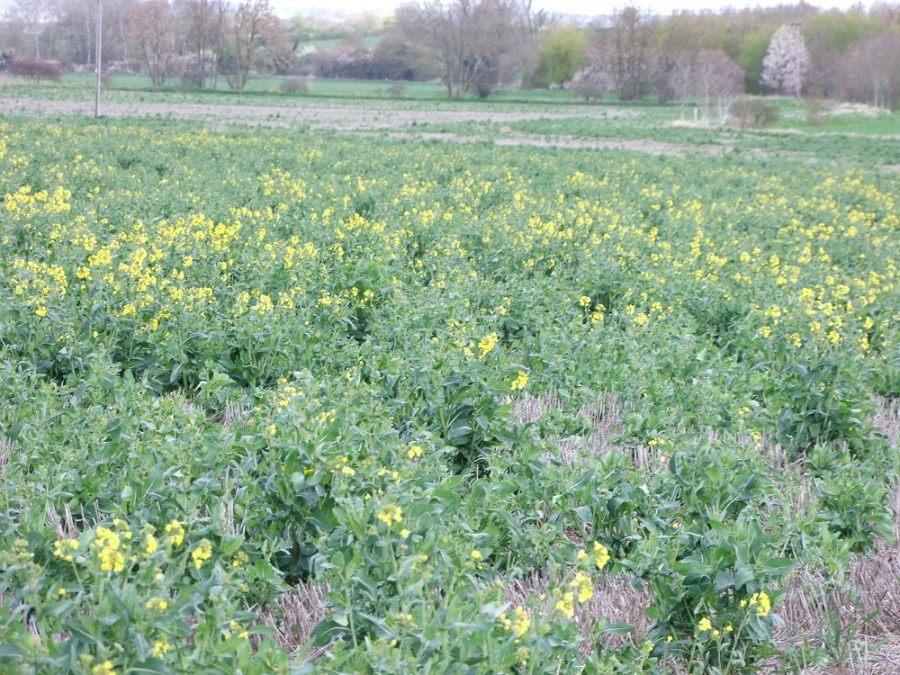A review of evidence and new trials work have revealed the factors most likely to influence cabbage stem flea beetle pressure in winter oilseed rape. Charlotte Cunningham reports.
The ADAS-led research identified 31 factors, including an estimate of the reliability of each individual effect and an indication of how open each factor is to management.
The results can be used to stack solutions in the field, as part of efforts to suppress the impact of this pest.
Of the CSFB pressure factors identified, 20 decreased it, seven increased it and four, on balance, resulted in a neutral outcome.
“Effective chemistry can stop pest targets in their tracks,” says Charlotte Rowley, who manages pest research at AHDB. “Without it, we need to get to grips with pest life cycles to find the chinks in their armour. As no non-chemical approach is completely reliable, a combination of the most reliable is needed to deliver multiple hammer blows and suppress CSFB populations.”
The research team mapped out the key factors across a growing season and used a traffic-light system to indicate those most likely to affect control. Only two received a green light: trap crops and soil conditions during sowing/early establishment.
OSR volunteers can act as a trap crop and divert CSFB away from adjacent cash crops and in trials, the approach reduced adult CSFB infestation (by up to 88%) and damage (by up to 76%). It also resulted in higher plant populations (by up to 56%) and reduced larval populations (by up to 69%).
However, benefits were variable and not always observed. It’s likely that relatively large areas of adjacent trap crops are more likely to deliver benefits, especially if left in place until after the bulk of CSFB migration has occurred, according to AHDB.
Seed rate
The researchers also investigated seed rate (amber light). Generally, they found that, in terms of yield, increasing the seed rate beyond that needed to achieve optimal plant populations – 25–40 plants/m2 – resulted in little benefit, unless conditions were dry during establishment.
Interestingly, higher seed rates were associated with greater larval numbers per ha, which could build pest populations across seasons.
CSFB larvae are far more likely to be present in leaf petioles than in the stem. As a result, managed defoliation reduced larval numbers significantly in trials (by 23–55%), with late defoliation, before stem extension, most effective. Linked on-farm trials found that sheep grazing and topping reduced larval numbers by 51% and 25%, respectively.
However, researchers didn’t detect significant yield increases in crops with reduced larval populations. As further research is required to refine the technique, the approach was marked as ‘amber’. Interestingly, defoliation also decreased the severity of phoma stem canker to levels equivalent to a fungicide spray.
Resistance issues
Pyrethroid resistance means that effective chemical control options are limited. Pot and field experiments showed that, once emerged, OSR often has good tolerance to CSFB damage, from both larvae and adults. However, further information is required to refine current spray thresholds for this pest.
“This work looked at an incredible array of options and has provided solid leads for management and research,” adds Charlotte. We’ve published the CSFB traffic-light system on our website and plan to fully revise our guidance in the next few months.”
An open AHDB call (closing 30 June 2020) aims to address the key research priorities identified in three parts:
1. Improve knowledge of CSFB’s life cycle and yield impacts.
2. Optimise on-farm tactics for CSFB control.
3. Develop innovative CSFB management techniques (co-funded).
Visit ahdb.org.uk/csfb for complete information on AHDB’s CSFB activity.




